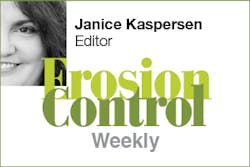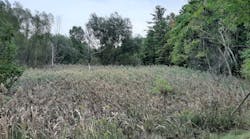
It’s easy for us to paint agricultural runoff as the culprit for many surface water ills, particularly excess nutrients, algae blooms, and dead zones like the one in the Gulf of Mexico. Lack of regulation on ag operations, and the voluntary nature of the conservation programs that do exist, leave plenty of loopholes for big farms.
But there’s another side to the story, and many farmers—especially those on smaller family-owned farms who own rather than lease the land they work—are intimately concerned with the health of their soil and the sustainability of their operations. They might be just as worried as the rest of us about water quality, but they’re definitely worried about the viability of their land and their ability to continue to make a living from it.
In this article, titled “Real-World Conservation” and published last week on Agriculture.com, one Iowa farmer talks candidly about what works and what doesn’t on his own 3,000-acre farm. We tend to think of Iowa as relatively flat, but his farm isn’t; it has elevation changes steep enough to make erosion a serious problem.
In addition to maximizing his corn and soybean yield, the farmer’s conservation goals are twofold: preventing soil loss and stopping nutrients from escaping in the runoff. “Factors that have the biggest impact include no-till farming, farming on the contour, leaving headlands in sod so I’m not putting end rows up and down the slope,” he says in the article. “It’s all commonsense stuff that I’ve known about for decades…A lot of farmers have gotten away from those practices.”
The farmer, Seth Watkins, has worked with university researchers to find techniques that work on his particular stretch of land. The article details some of the things he has tried, as well as ideas he’s rejected—for example, the idea that if a patch of land is not productive, the solution is simply to add more fertilizer. (“Going back in history, you might realize that it’s just a naturally poor piece of soil and maybe you should just find another use for it,” he notes.)
One technique he recommends instead is what he calls “the strategic placement of prairie,” or planting native grasses in spots that are not producing good yields. “The sad thing is…some of these areas are cancerous. When they get weak, they just seem to spread their weakness to adjacent areas. I’ve learned that if I put some native grasses in those weak areas, not only do I control erosion in those spots but also I stabilize them.”
In some areas he plants deep-rooted cover crops to break up hardpan, and in less-productive fields he grows forage crops for his cattle. If the soil is healthy enough—and with a little help from the cows, who fertilize the areas they graze—he hopes to be able to forgo adding nitrogen at all. The entire article is worth reading, and although you might not agree with every technique, it’s interesting to see his well-though-out perspective on what’s good both for his local farm and for the environment as a whole.
Master Class Series From Forester University
There is still time to register and earn PDH or CEU credits for this popular series:
April 20–May 26
Sediment & Erosion Control for Construction Sites Master Class Series
Join industry experts Jerald Fifield and Tina Evans for a comprehensive, six-part live and on-demand master class and workshop series exploring the ins and outs of effective sediment and erosion control plan design and review for construction sites. Enjoy six online lectures and Q&A sessions and three interactive workshops presented by Fifield and Evans, delving into Fifield’s best-selling third edition of Designing and Reviewing Effective Sediment and Erosion Control Plans (included in your Master Class Series package).
Click here for more information and to register.
Click here for a full list of upcoming webinars and webcasts.
About the Author
Janice Kaspersen
Janice Kaspersen is the former editor of Erosion Control and Stormwater magazines.

